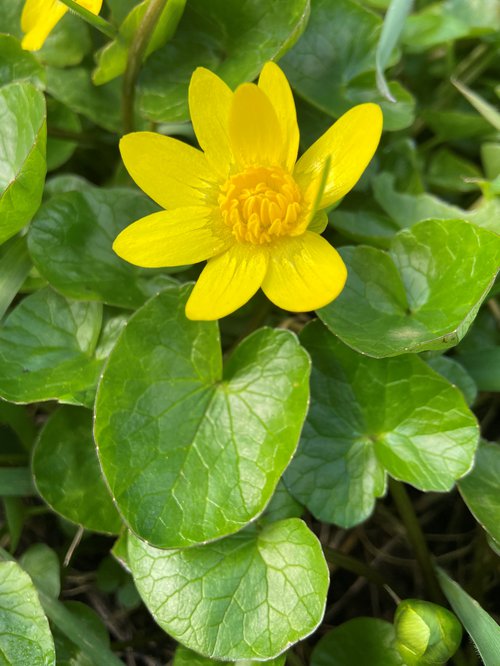Be Aware of this Early Spring Weed!
Things are warming up and the earliest of weeds are getting a move on their spring growth. Lesser celandine (Ficaria verna) is a lesser known weed, but is one that should be on everyone’s list of weeds to be on the look out for.
Lesser celandine is a stunning ornamental ground cover, and is one of the earliest blooming flowers in the spring. It is also a Class B Noxious Weed that finds Lewis County a very suitable place to grow. By emerging before natives in early spring, lesser celandine gains a competitive advantage over native understory plants. Once established, lesser celandine quickly takes over a space, reducing overall diversity, and eventually creates a monoculture. Timing of control efforts is critical, as the plant goes dormant in early summer, re-emerging in mass the following spring. Lesser celandine could easily become a huge problem if it finds its way into our forests and natural spaces.

Lesser celandine grows in a variety of habitats from moist, shaded woodlands, wetlands, streambanks and riverbanks to lawns, landscaped areas and roadsides. In Lewis County, lesser celandine is most likely to occur in the home garden, or worse, as an escapee from someone’s backyard.
Lesser celandine is a herbaceous, mounding perennial, with medium to dark green, heart shaped leaves, with fairly prominent venation. Flowers of the lesser celandine are often solitary yellow blooms on long stems and can have 7-13 petals. Flower color can vary depending on cultivars. This beautiful but noxious weed can easily be overlooked because it’s often mistaken for common creeping buttercup or our native yellow marsh marigold.
There are a few known populations in Centralia and Chehalis that our staff has been battling for several seasons. This is a tenacious little pest and we’d love to have help from landowners in controlling the lesser celandine and preventing its spread.
If you spot lesser celandine growing along roadsides or on public land, please notify our office. If you have lesser celandine growing in your landscape and would like to find out how to control it, please get in touch with Lewis County Noxious Weed Control #(360) 740-1218, or email us.
For more information about Lesser Celandine or other noxious weeds in Washington, visit Washington State Noxious Weed Control Board at https://www.nwcb.wa.gov/
